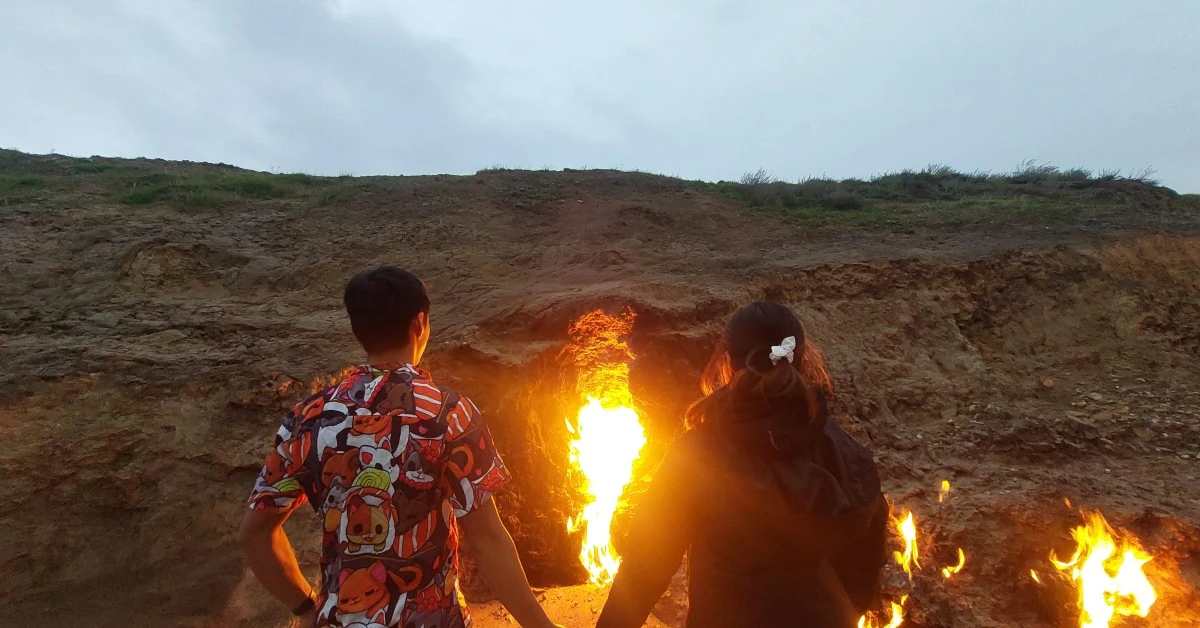Ultimate Fire Temple And Fire Mountain Baku Review
EscapeWithAnnualLeave contains affiliate links. We may receive compensation at no extra cost to you. See our Disclosure Policy for more information.
Located Northwest of Baku within a ~ 1-hour drive, the Ateshgah (Fire Temple) and Yanardag (Fire Mountain) are a must-go location in Azerbaijan. These are some of the views few icons in the world that you will learn about the fire worship culture and experience the eternally burning at the same time.
Both icons would require around 4 hours for a visit including transportation lead time. While it is possible to take public transport to Yanardag (metro + bus), the best-valued option is to join a half-day tour for these two in the Asheron area. Or there are a lot of full-day tours you can ride on to cover both Gobustan and these two fire icons.
During my last visit, I spent a good late afternoon for both Ateshgah and Yanardag via a day tour (and morning in Gobustan and mud volcano). I highly recommend you do the same. With the usage of a day tour, you can cover most of Baku within 2 days with the first day for the city center and the second for the attractions in the suburbs.
Still haven’t decided to go to these two fire items or not.
Let’s take a look at my review below.
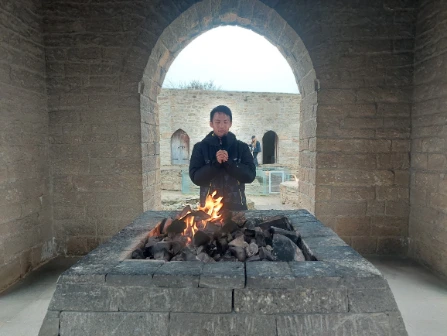
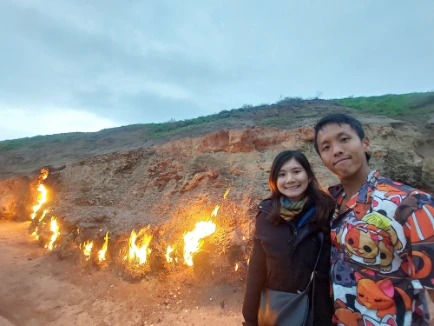
What To Expect?
Both icons are located in the Absheron Peninsula of Azerbaijan. We usually start with the Fire Temple first and Fire Mountain second.
Atestgah – The Fire Temple of Baku

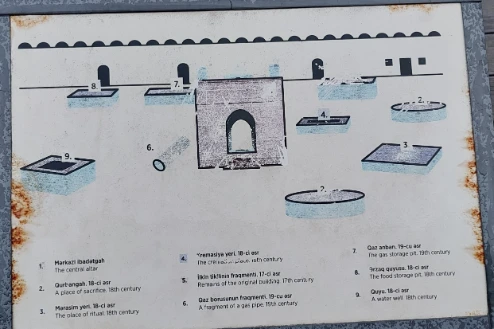
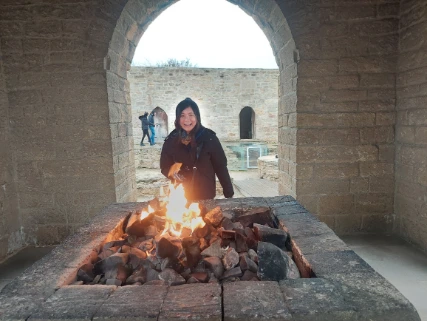
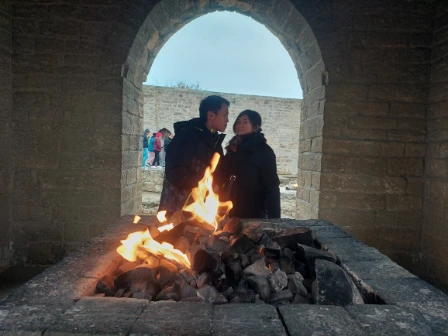
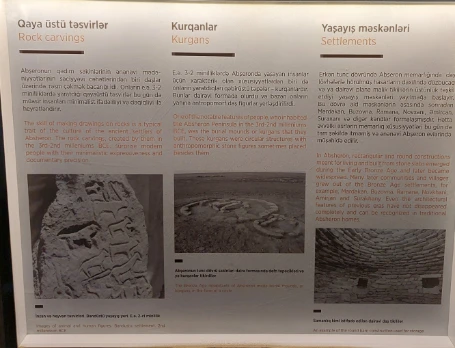

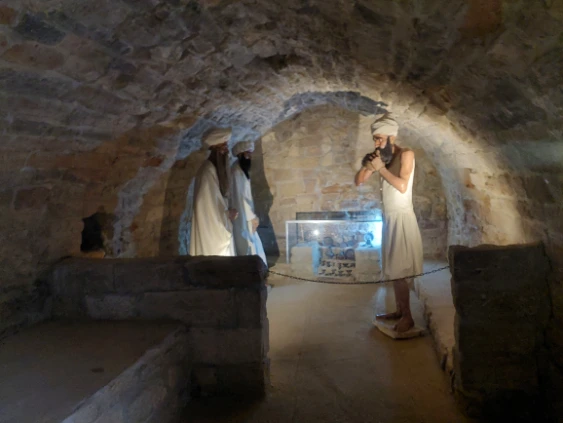
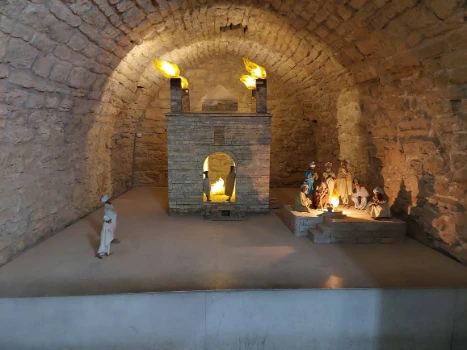
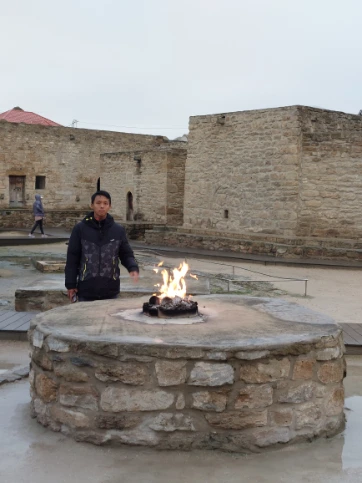
For Atestgah, it dates back to the 17th century with deep roots in the region’s Zoroastrian heritage. It used to be a worshipping place for the Zoroastrians (fire worshippers), Hindus, and Sikhs. “Atash” (آتش) is the Persian word for fire.
With the diverse cultures, you can find the traces of Indians and Persians there. I was very surprised when I saw a Ganesha (the elephant head god from Hinduism) in one of the exhibitions there. Because of its historical significance, it has been classified as one of the UNESCO World Heritage sites and used as a museum since 2007.
There you will find multiple exhibition rooms with English information on the site itself and its history. If you are a photo-lover like me, you will be particularly fond of the eternal flame in the middle of the site for photos.
Yanar Dag – The Burning / Fire Mountain Of Baku
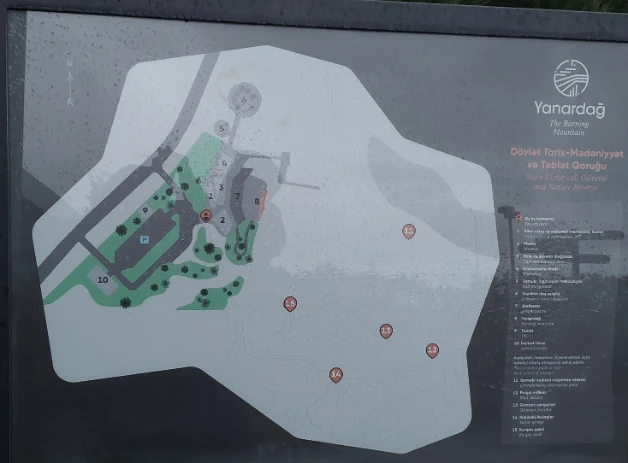

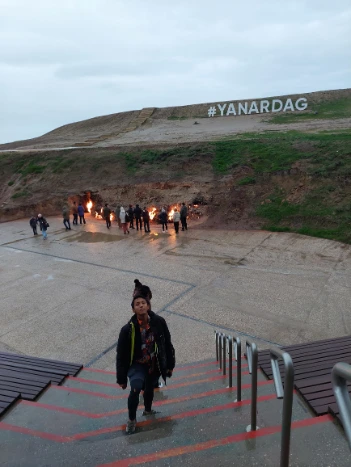
The best thing about this icon is the continuous flame from the hillside because of natural gas leakage. Spoiler ahead the burning area is only limited to the side of the hill instead of the whole mountain. Roughly, speaking it is around 100 meters long with flames reaching a height of 3 meters. Despite, its short distance, it is a very good spot for photos.
During my last visit, we are allowed to take photos at a very close distance from the fire. Of course for safety reasons, you will need to stay behind the yellow line. However, if you love IG photos like me you can spend a good 30 minutes at least there to take photos with different angles.
Other Than Photo At The Hillside
The whole historical sites have 15 points on the map. Mainly, the burning mountain where everyone takes photos is at point 8. Naturally, you shall have no trouble finding it after entering the site. On the map from points 11 to 15, you will need to book a guide to visit them. From the map, there seems to be a mud volcano there which you may want to check out if you are not going to the Gobustan side (another direction from Baku). For details, please refer to the official website.
Cultural-wise, it may not have as deep historical or religious significance as the fire temple. At best the flame was said to be accidentally discovered by a shepherd in the 1900s. Additionally, the local guide mentioned that the fire was on a larger scale in the past but the government had to hide it from the Germans during the Second World War.
Regardless of the weather in Baku, you will feel warm (not hot) near the fire there, and I can even take off my jacket for the photo.
It is around 30 30-minute drive from the fire temple and usually, you shall visit in late afternoon or early night. During that time, you will have the best pictures with the flame.
Entrance Fee
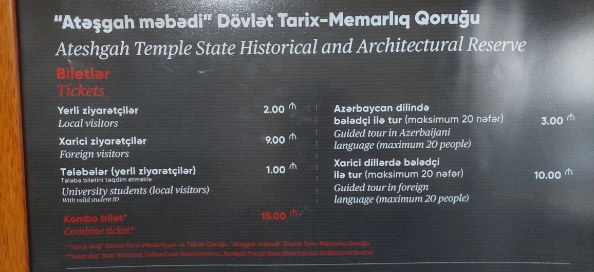
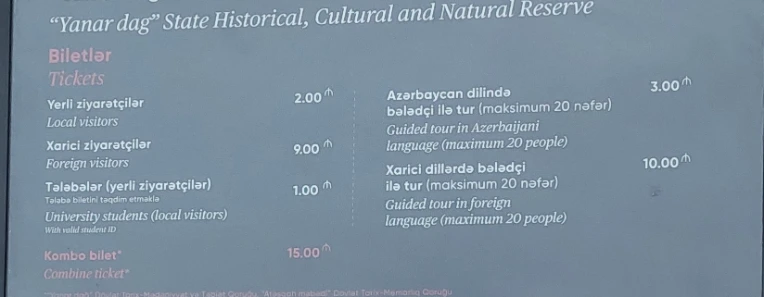
Entrance fees for both attractions are very affordable. For the fire temple, it will cost you 9 AZN (~ 5 USD) and for the burning mountain, it will be another 9 AZN (~5 USD). You can save 3 AZN by purchasing the combo ticket for both sites for 15 AZN at any of the ticket offices there.
Opening Time


Both Ateshgah Temple and Yanar Dag, it open daily from 10 am to 8 pm (summer season) and 7 pm (winter season). Again I recommend you to go to the temple first and the burning mountain after that, for the best flaming photo at dawn.
Dress Code
The temple used to be a religious place but now is purely a museum, while the burning mountain is of no religious component. In that, there is no dress code for both attractions. You can wear shorts or whatever you like there according to the weather. Temperature wise you can still feel hot near the flames at Yanar Dag, in case you want to dress light for photos like me during the winter.
Ateshgah Or Yanardag Or Mud Volcano Or Gobustan
Azerbaijan is not a popular tourist Country like Thailand, Vietnam, or other European Countries. For me, it is only part of the wider Caucasus trip. Similarly, I suppose you are likely to spend 2 or 3 days there before moving to Georgia.
Meanwhile, for first-time visitors, it is quite a hard decision to pick the attractions in suburban areas of Baku, namely Ateshgah, Yanardag, Mud Volcano, Or Gobustan. I would recommend you to go for Ateshgah & Yanardag over Mud Volcano & Gobustan.
Northwest versus Southwest
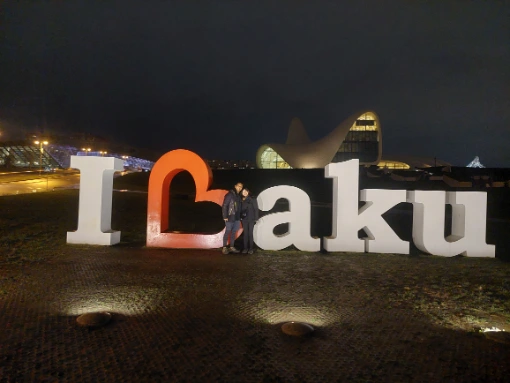
Location both fire attractions are located northwest of Baku with a distance of around 19 miles; Versus the Gobustan & mud volcano southwest of Baku with a distance of 40 miles.
That means these two groups of attractions are in a completely opposite direction. This is also the reason why all the half-day tours are either Fire Temple + Burning Mountain or Gobustan + Mud Volcano.
I suggest you prioritize the northwest because the burning mountain itself is the most unique feature in the Country. This is the first item that usually comes off when I talk about Azerbaijan. Additionally, if you are going there on tour, you will usually have a chance to drop by the Heydar Aliyev Center to take a picture with the “I Love Baku” sign. Since the center is beyond walking distance from Baku city center, dropping by there would save you a great travel time.
Although, the mud volcano and Gobustan are of historical value and unique features. However, you can’t soak into the mud volcano in Azerbaijan like Vietnam or in the Dead Sea. Moreover, the rock engraving at Gobustan is not that feasible or well-established compared to other destinations in the world like Egypt or Ethiopia.
Why Not Both
If you have plenty of time (i.e. one full day), my recommendation is to take a full-day tour of all these four attractions. Most of the local tours in Baku will offer morning visits to the southwest part and afternoon visits to the northwest part.
The tour price ranges from 40 USD to 60 USD per person, not including entrance tickets, 20 AZN for a taxi to a mud volcano, and lunch. Be aware the 20AZN needs to be paid in cash, so make sure you exchange enough AZN before the trip. Despite being slightly more expensive than going there by yourself, it is a reasonable time-saving compared to the extra cost.
Let me know about your journey in the Baku Fire Temple and Fire Mountain. Feel free to leave me a comment or any inquiry.

